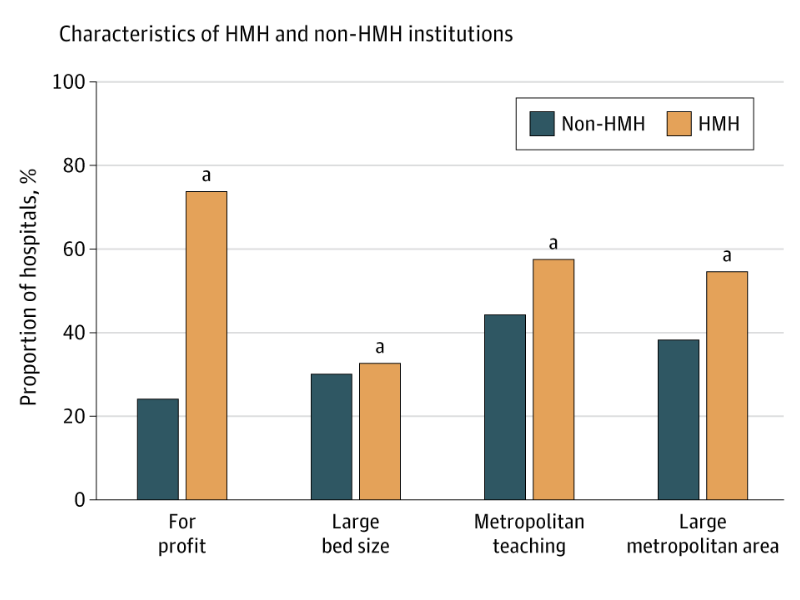Paying More for Less
Many high-markup hospitals are for-profit institutions, where patients are charged far more for routine surgery and care.

Read Time: 3 minutes
Published:
There is a persistent myth in American health care that higher cost means higher quality. In reality, patients often pay more for less. More and more hospitals are operating like businesses, and it’s often at the expense of patient health.
Hospitals can charge prices that are significantly higher than the actual cost (or markup) to cover hospital costs and make a profit. Costs occur from everyday operations, especially when patients are uninsured, out-of-network, or have Medicare or Medicaid, which typically pay out less than the actual cost of care. Hospitals that engage in these practices are known as high-markup hospitals (HMHs).
HMHs are typically for-profit or located in large metropolitan areas, like New York or Los Angeles. The use of price markups aligns with the financial models of for-profit hospitals, because their goal is to maximize revenue for investors. Large metropolitan hospitals increase prices to cover operating costs, which are higher due to denser populations and greater demand for care. A 2012 article revealed the cost of an appendectomy (a common surgery) in California ranged from about $1,500 to more than $182,000, depending on the hospital—a staggering 12,033% price increase.
Sara Sakowitz and coauthors examined 1,960 U.S. hospitals to understand how hospital pricing relates to quality of care. Using data from over 362,000 patients, the researchers calculated each hospital’s “markup ratio,” or the difference between what hospitals charge versus the actual cost of care. Hospitals in the top 10% of markups were labeled as HMHs. They then compared outcomes like mortality, major complications, 30-day readmissions, and discharge location between HMHs and other hospitals.

Almost three-quarters of HMHs were for-profit institutions, compared to less than 10% among other hospitals. Regardless of hospital type, patients are often charged far more for surgery, with the average hospital charging about three times the actual cost. HMHs charge over 8 times the cost, and in the most extreme cases, patients were charged 17 times the cost.
Despite making more in profits, HMHs tend to provide worse care. Patients treated at HMHs were significantly more likely to experience major complications, including heart, lung, kidney, and infection complications. Patients were also more likely to be readmitted or even die within 30 days of surgery. This trend remained true even when adjusting for illness severity or operation type.
Patients, especially those who are uninsured or underinsured, may face financial ruin while receiving substandard care. Even those with insurance aren’t spared. Inflated hospital charges are passed down as higher premiums and health care costs for everyone.
The results suggest that profit structure, not patient need, plays a major role in pricing, and that aggressive billing may go hand-in-hand with lower investment in quality and safety. Pricing transparency and regulation are urgently needed, especially targeting HMHs as a priority for reform. Although a hospital price transparency initiative has been in place since 2021, it only requires price transparency upon request. The researchers recommend requiring hospitals to publicly report their cost-to-charge ratios so that policymakers, insurers, and patients can hold institutions accountable.



